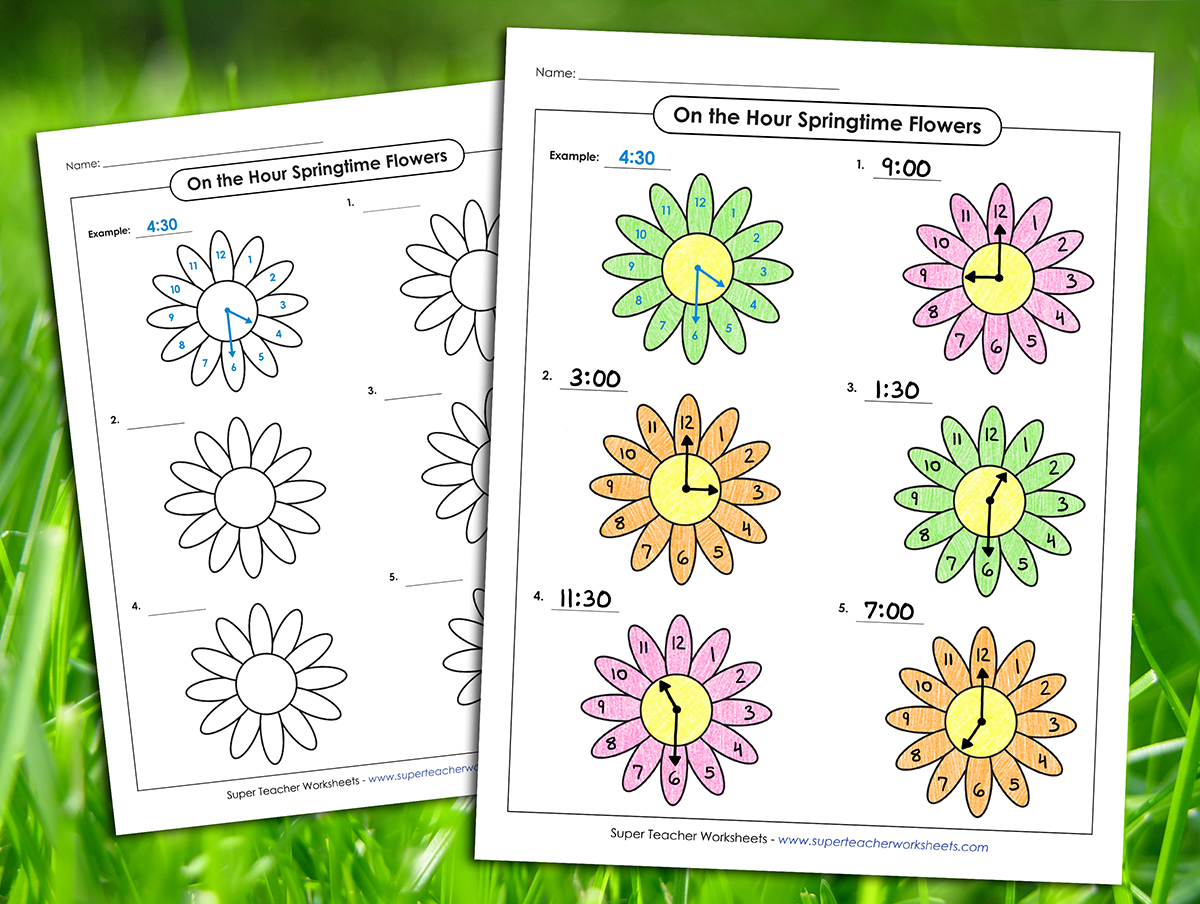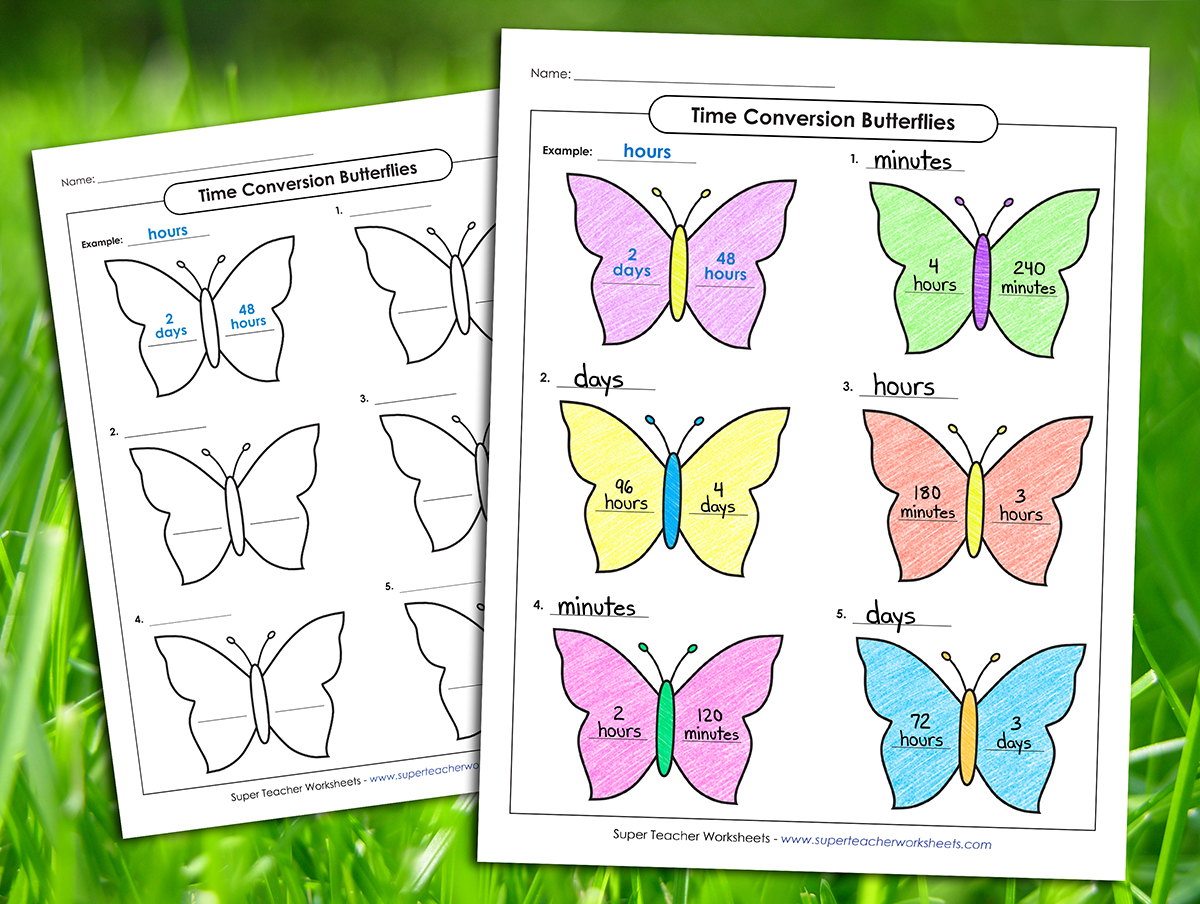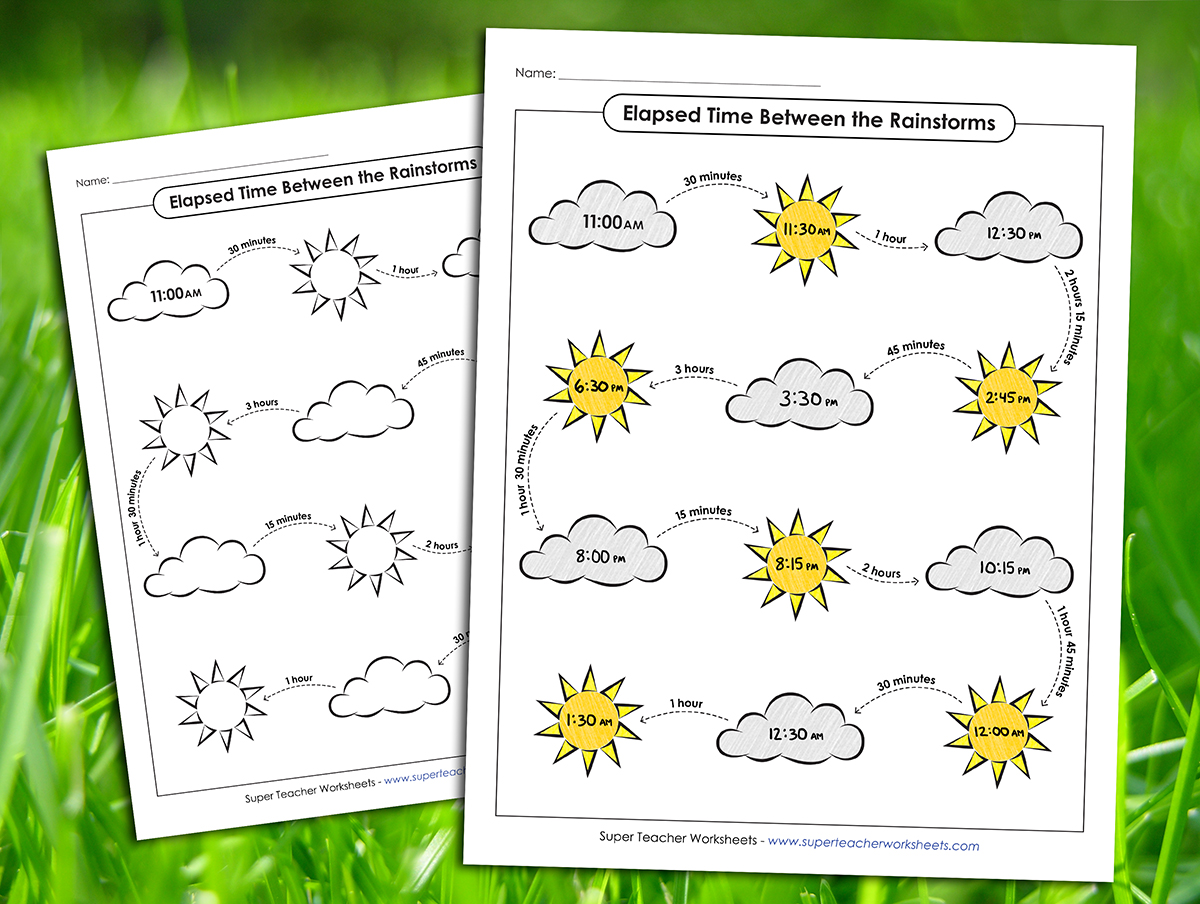
It's time for spring! Celebrate the arrival of spring with three math activities that help students practice basic telling time concepts. We've included a handy printable template for each activity you'll read about in today's blog post, so there's no need to waste time on lots of prep work! Get ready to practice telling time in hours and half hours, converting units of time, and calculating elapsed time. Read on to find out more.

In this activity, students will practice telling time by drawing the hands on an analog clock in hour and half hour increments. Before you begin the activity, print out this worksheet template. You'll notice that each springtime flower on the worksheet can be likened to an analog clock; each of the twelve petals represents an hour on the clock, and the center of the flower is blank for students to draw the clock hands. The blank line above each springtime flower clock is for you to write different times in hour and half hour increments. Your students will match the given time by drawing it correctly on the flower analog clock.
The first flower on the worksheet is an example filled out with the numbers 1-12 on the petals and the hands drawn in to match the time given. Students will likewise fill in the number increments on each flower clock and draw the hands to match the time.
You may choose to fill out the times you want your students to practice before you pass out the worksheets, or you may have your entire class fill out the times you expect them to match at the start of the activity.
We recommend sticking with times in hour and half hour increments to make it easier for students to draw the hands on each clock, although this activity can be done with time to the nearest five minutes as well.

This activity helps students practice converting units of time. Make sure you print out a copy of the worksheet template for each of your students before you begin. You will notice a blank line above each butterfly, as well as on the left and right wings. Here's what to do:
On the left wing of each butterfly, write a unit of time you would like your students to convert (example: 2 days). On the line above that butterfly, label the unit of time you would like your students to convert the given time into (example: hours). Students will then calculate the time conversion and write it on the right wing of the butterfly (example: 48 hours).
The first butterfly on the worksheet is filled out as an example. Again, you can either prefill the time labels and the original units of time before you give your students the activity to complete, or you can have your students fill in the labels as a class.

Students will calculate elapsed time in this activity that features sunshine and rain clouds—the hallmarks of spring! Print out this handy worksheet template to get ready for the activity. The first rain cloud on the worksheet is pre-labeled with a time. (You won't need to fill out anything on this worksheet ahead of time; students will fill out all the times except the first one!) On the dotted line between each rain cloud and sun, students will note how much time has elapsed between the period of rain and sunshine. They will record the elapsed time in the subsequent sun or rain cloud.
As an example, if the first rain cloud on the worksheet is labeled "11 AM" and the dotted line connecting it to the next sun says "30 minutes," students will write "11:30 AM" on the blank sun, and so on.
Which telling time activity is your class's favorite? We want to hear from you! Leave us your feedback in the comment section below.
Remember to tag @iknowit on social media if you do any of these springtime math activities with your class!
You can find more engaging telling time activities on iKnowIt.com. Check out our online math lessons today!